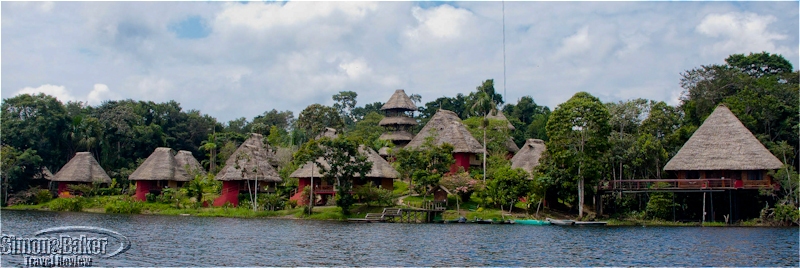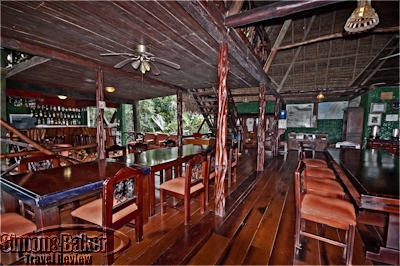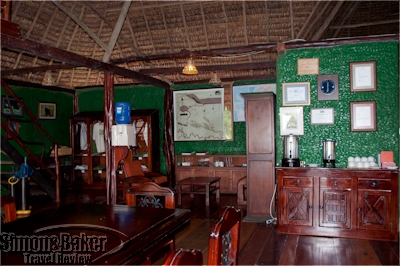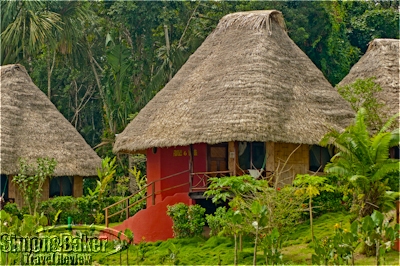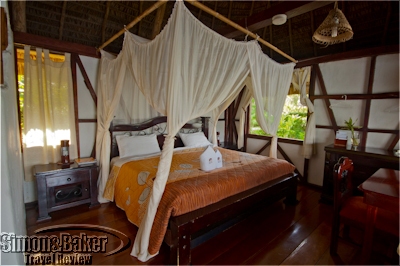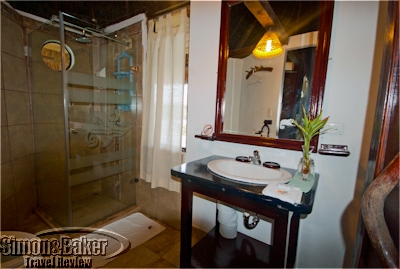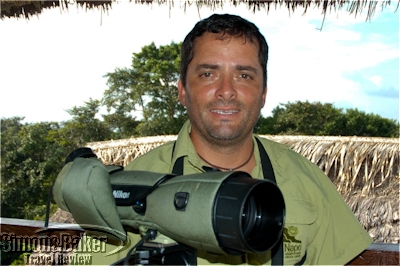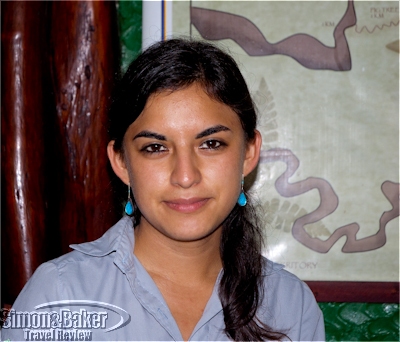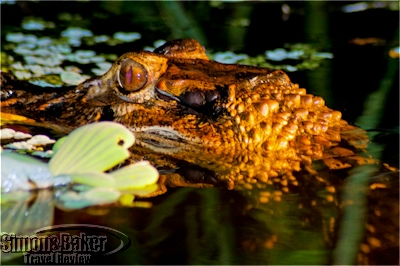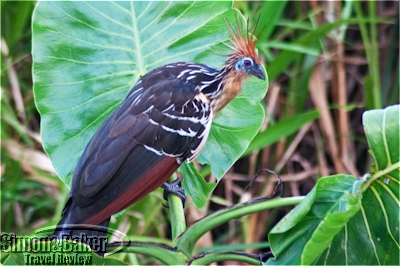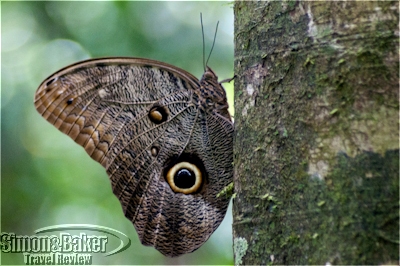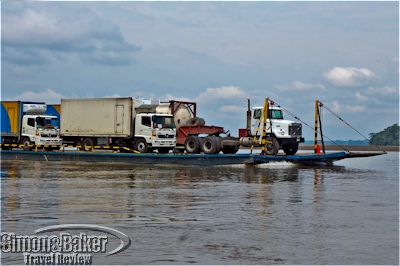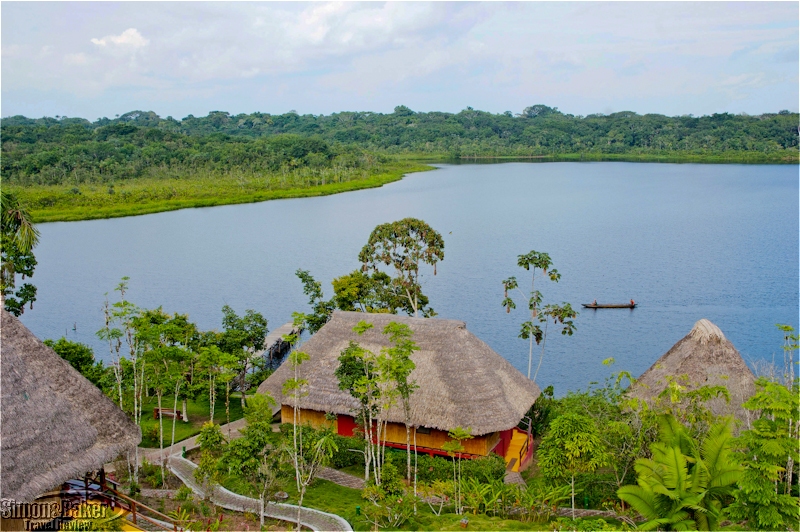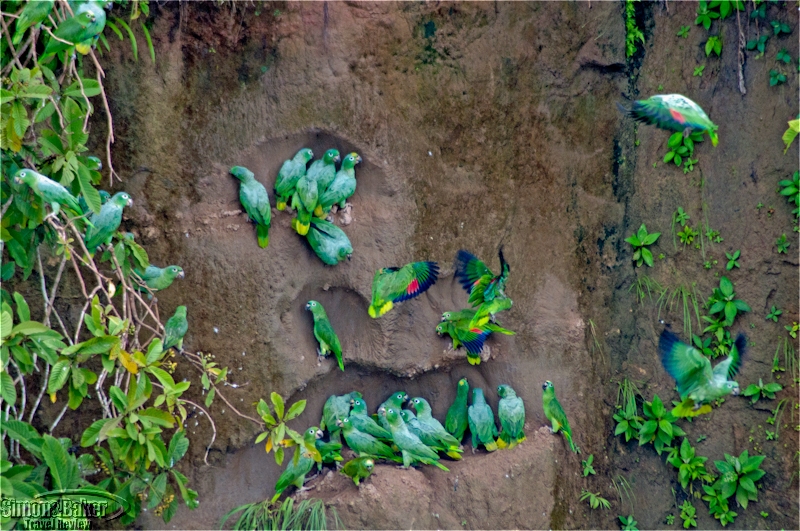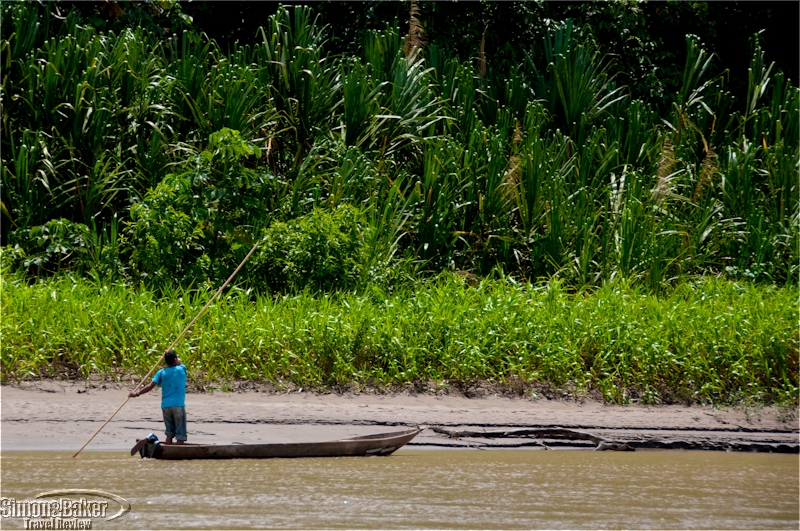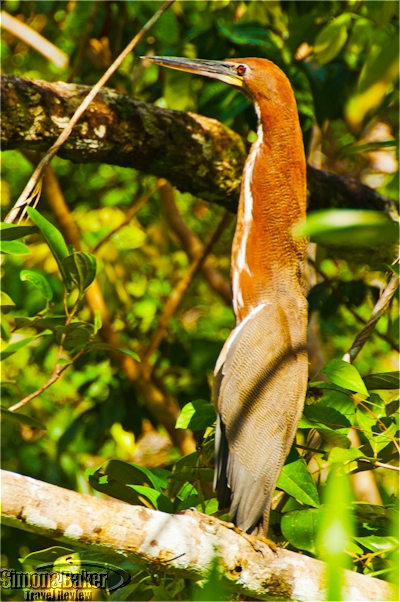
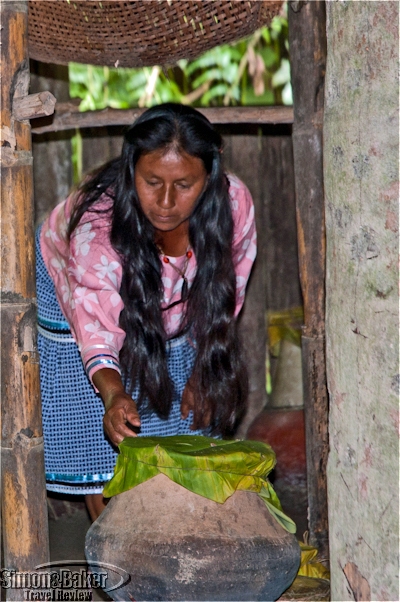
We exchanged the motorboat for an awaiting canoe (no motorized crafts were allowed in the park) and quietly glided upstream under a thick arch of mangroves and palms echoing with birdcalls. We were in the crown jewel of the park, the ancestral territory of the Kichwa Anangu community. The abundance of wildlife was far superior to anything I had previously experienced in other areas of the Amazonian rainforest, and Roberto ensured I didn’t miss a single sighting. The 2.5 kilometer (1.5 mile) ride is estimated to take a little over one hour. Ours took twice that long. But one three-toed sloth, several monk saki and red howler monkeys and a dizzying variety of birds later, we emerged from the river onto the Anangucocha Lake. On the far side of the lake, a village of thatched-roofed, bright ocher adobe bungalows was nestled in the exuberant vegetation, and staff was hurrying toward the dock to welcome us with glasses of fresh mango juice. We were back in the best the present has to offer. In the heart of a great swath of pristine rainforest, the Napo Wildlife Center luxury eco-lodge sat on a low lakeshore ridge. The property and the 21,400 hectares (82 square miles) of conservation land that surround it were, at the time of my visit, wholly owned and managed by the Anangu community; and an inspiring testimonial to its determination to improve the quality of life of its people and preserve the integrity of their ancestral territory and culture by providing them with sustainable employment.
The lodge was designed to meet the high expectations of international visitors, including airy individual bungalows with well-appointed bathrooms and generous hot water pressure. There was round the clock electricity, and WiFi connection throughout, including the hammock on my private terrace overlooking the lake. At the top of the ridge, the common areas included a 19 meter (60 foot) thatched observation tower with a sweeping view of the lake. It was an ideal vantage point to enjoy the constant activity of the bird population nesting and feeding around the lodge grounds. Beyond the outstanding facilities and exceptional wildlife, what made my visit unique was the opportunity to observe first hand the positive impact of the Napo Wildlife Center program on the daily life of the Anangu people. The staff came mainly from the Kichwa Anangu community. Their pride in the Napo Wildlife Center was obvious, and translated into warm and attentive service. It was clear that everyone with whom I came in contact wanted to make my visit an unforgettable Amazon experience. Additionally, while the life of the community was separated from tourism activities, one hour downstream from the lodge, the women had created an association, Kuri Muyi (Kichwa for River Gold) with an Interpretation Center facility adjacent to their village. It was especially interesting to meet these women, who gave me a glimpse at the tasks of their daily lives as well as their traditional crafts and dances.
With its outstanding blend of luxury wilderness accommodations, pristine environment, abundant and varied wildlife and successful responsible tourism practices, the Napo Wildlife Center earned the prestigious Rainforest Alliance 2009 Community Sustainable Standard-Setter award. It also made the top of my personal short list of rainforest experiences. I have already recommended it to friends who share my commitment to low impact sustainable tourism and who are considering an Amazon adventure.
Children The property could accommodate, by prior arrangement, children over the age of four.
Class Of Accommodation Luxury eco-lodge
Communications There was no cell phone signal in the park. Satellite WiFi was available throughout the property; speed was moderate but sufficient to place internet telephone calls. There was a nominal fee for internet access.
Handicapped Access One bungalow had an access ramp and was wheelchair friendly.
Length Of Stay Four nights
Location On the shore of the Anangucocha Lake, within the Yasuni National Park in Northeastern Ecuador, 250 kilometers east of Quito: three hours downstream from Coca by motorboat and canoe.
Owned-Managed The Napo Wildlife Center was wholly owned and managed by the Kichwa Anangu community. It is the brainchild of Jiovanny Rivadeneira, a once subsistence farmer and hunter who had gone on to be a boatswain, then guide and ornithology specialist before returning to the community. Rivadeneira has been a leading force behind the program and remained its general manager.
Power There was round the clock electricity throughout the property. It was supplied by silent generators supplemented by solar panels.
Size The lodge consisted of 16 individual bungalows that could accommodate a maximum of 48 guests. It employed a staff of 60 including 10 guides. There were 10 paddle canoes for travel around the park, and three motorboats that ensured transportation for guests, staffs and goods between Coca and the lodge.
Year Open-Renovated The property opened in 2003. It was the object of meticulous on-going maintenance.
Room My 43 square meter (450 square foot) bungalow, Number Six, was an inviting adobe and thatch retreat with screened-in picture windows on all four walls. The walls were white plaster, which enhanced the dark polished hardwood floors and peaked thatched ceiling. My shaded terrace faced the lake. With its two rattan armchairs and inviting white cotton hammock, it immediately became my favorite lounging spot. The main bedroom had a king size bed covered in a tawny and white cotton quilt and draped in mosquito netting. There were bedside tables with reading lights on both sides of the bed. A deep bookcase with three storage shelves and a writing table and chair completed the décor. A high divider separated the main bedroom from a smaller area with a matching double bed.
Meals and soft drinks were complimentary, as were all activities and guided tours, transfers to and from Coca Airport to the lodge and canoe transportation around the park. Alcoholic beverages were available from the bar and priced individually.
Facilities In addition to the observation tower attached to the main hall, another, taller observation tower was located across the lake, a 45 minute canoe and walking trip from the lodge. Built alongside a giant kapok tree, a 38 meter (125 foot) high platform offered a superb perspective of the wildlife above the forest canopy. There was also a thatched bird-viewing blind with benches and chairs, deep in the forest 30 minutes down river from the lodge. It faced a salt and clay lick visited daily by large flocks of parrots and parakeets. The blind was a 30 minute walk from the river bank, easily accessible by a neatly paved path.
Gift Shop In addition to a small gift case at the lodge, local pottery, weavings and jewelry by craftswomen of the Kuri Muyi association were available at the Anangu Interpretation Center.
Mammals I sighted included: pigmy marmoset, golden-manteled tamarin; howler, squirrel, night, monk saki and white-fronted capuchin monkeys, and brown-throated three-toed sloth. Amphibians included: green tree frog, black caiman, water turtle and forest dragon lizard. Butterflies: owl and iridescent blue morpho.
Birds: rufescent-tiger, striated and capped herons; hoatzin bird; great and undulated tinamou, swallow-tailed, snail and plumbeous kite; great yellow-headed vulture, black hawk, red-throated caracara, Buckley’s forest falcon, Salvin’s curassow and speckled chachalaca; blue and yellow, red and green, and scarlet macaws, dusky-headed and cobalt-winged parakeets, scarlet-shouldered parrotlet and Mealy Amazon parrot; greater Ani, pygmy owl, ladder-tailed nightjar and olive-spotted hummingbird; Amazon, ringed, green and pygmy kingfishers; ivory-billed aracari, white-throated and channel-billed toucans; rusty-belted tapaculo, great potoo, yellow-breasted flycatcher, lesser kiskadee, red-throated caracara and limpkin.
Date Of Visit February 2012
Reviewers Article and Photographs by Josette King
Service My bungalow was serviced twice daily. Every member of the staff with whom I came in contact was friendly and attentive.
Would You Stay There Again? Yes
Contact Information
- Rio Yaupi N 31-90 y
- Av. Maniana de Jesus
- Quito, Ecuador
- +593 2 600 5893
- +593 2 600 5819
- +593 9 275 0069
- (mobile number, operations)
- +1 866 750 0830
- (toll free U.S.A.)
- 0 800 032 5771
- (toll free U.K.)
